Assembly of the International Space Station
[2] A number of smaller pressurized sections will be adjunct to them (Soyuz spacecraft (permanently 2 as lifeboats – 6 months rotations), Progress transporters (2 or more), the Quest and Pirs airlocks, as well as periodically the H-II Transfer Vehicle).The Rassvet module on the ISS right now was originally supposed to be the on-ground dynamic testing mock-up of the now-cancelled Science Power Platform.This potential problem with the Zvezda was made apparent when in October 2020 the toilet, oven, and Elektron all malfunctioned at the same time and the cosmonauts onboard had to make emergency repairs.Although during the construction the station attitude may vary, when all four photovoltaic modules are in their definitive position the aft-forward axis will be parallel to the velocity vector.[citation needed] Between the Columbia disaster and the resumption of Shuttle launches, crew exchanges were carried out solely using the Russian Soyuz spacecraft.Because the ISS had not been visited by a shuttle for an extended period, a larger than planned amount of waste accumulated, temporarily hindering station operations in 2004.Requirements for stepping up the crew size included enhanced environmental support on the ISS, a second Soyuz permanently docked on the station to function as a second 'lifeboat', more frequent Progress flights to provide double the amount of consumables, more fuel for orbit raising maneuvers, and a sufficient supply line of experimental equipment.Later additions included the Bigelow Expandable Activity Module (BEAM) in 2016, and numerous Russian components are planned as part of the in-orbit construction of OPSEK.
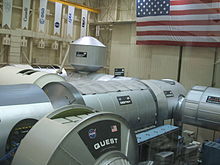

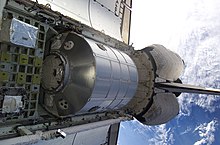
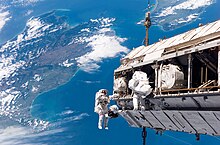

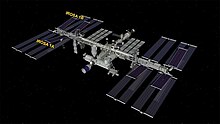
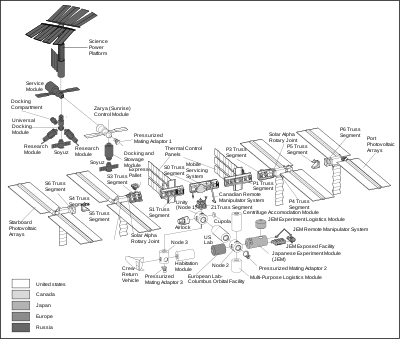
International Space StationProton rocketSTS-88ZvezdaFalcon 9ProtonSoyuz-UUnity ModuleDestiny Laboratory ModuleHarmony ModuleColumbus orbital facilityJapanese Experiment ModuleThe trusssolar panelsmockupJohnson Space CenterHouston, Texasspace stationlow Earth orbitatmospheric dragreboostsperiodSoyuz spacecraftProgressH-II Transfer VehicleUS Orbital SegmentAlpha Magnetic SpectrometerSTS-134Russian Orbital SegmentRassvetSTS-132Science Power PlatformThinkPadphotovoltaicstarboardattitudeSpaceX DragondownmassColumbiafinal missionMulti-Purpose Logistics ModuleSpace Shuttle DiscoverySTS-102Space Shuttle Columbia disasterSpace Shuttle programSTS-114Discoveryexternal tankExpedition 7STS-121Crew DragonSpaceXBigelow Expandable Activity ModuleiROSAsPrichalLeonardoHarmonyTranquilityCupolaDestinyColumbusMulti-Purpose Logistics ModulesProton-KSpace ShuttleEndeavourSTS-92STS-97AtlantisSTS-98Canadarm2STS-100STS-104Progress M-SO1STS-110STS-111STS-112STS-113STS-115STS-116STS-117STS-118STS-120STS-122DextreSTS-123Experiment Logistics ModuleSTS-124STS-119STS-127Progress M-MIM2STS-129STS-130STS-133SpaceX CRS-2SpaceX CRS-8SpaceX CRS-9SpaceX CRS-18SpaceX CRS-20Nanoracks Bishop AirlockSpaceX CRS-21SpaceX CRS-22Proton-MEuropean Robotic ArmProgress MS-18Progress M-UMProgress MS-21SpaceX CRS-26SpaceX CRS-28new arraysAxiom SpaceAxiom StationInterim Control ModuleISS Propulsion ModuleHabitation ModuleCrew Return Vehicle (CRV)SpaceX Dragon 2Centrifuge Accommodations ModuleRussian Research ModulesMultipurpose Laboratory ModuleUniversal Docking ModuleScience Power ModuleRussian Orbital Service StationNode 4List of human spaceflights to the International Space StationUncrewed spaceflights to the International Space StationManufacturing of the International Space Station